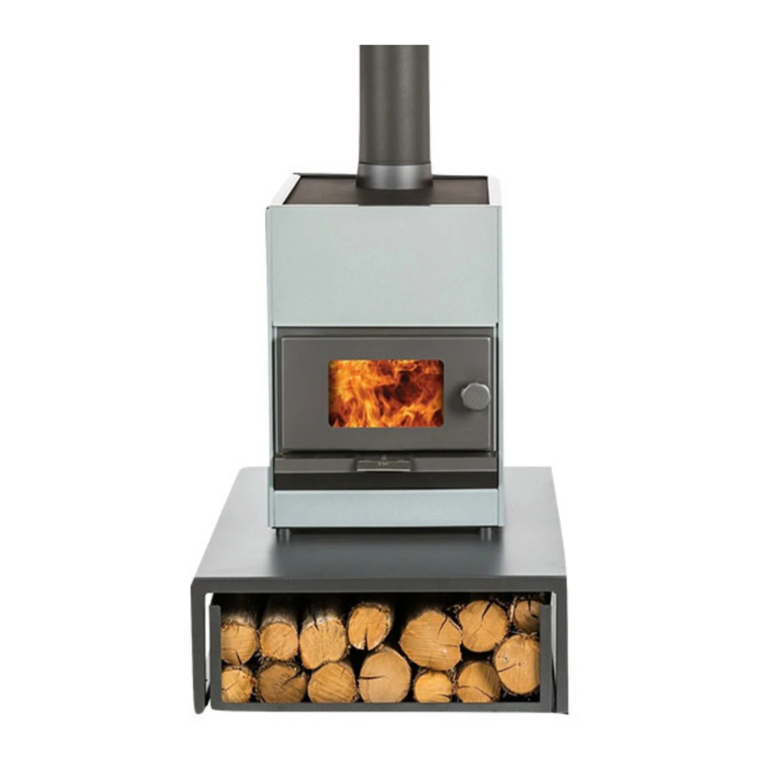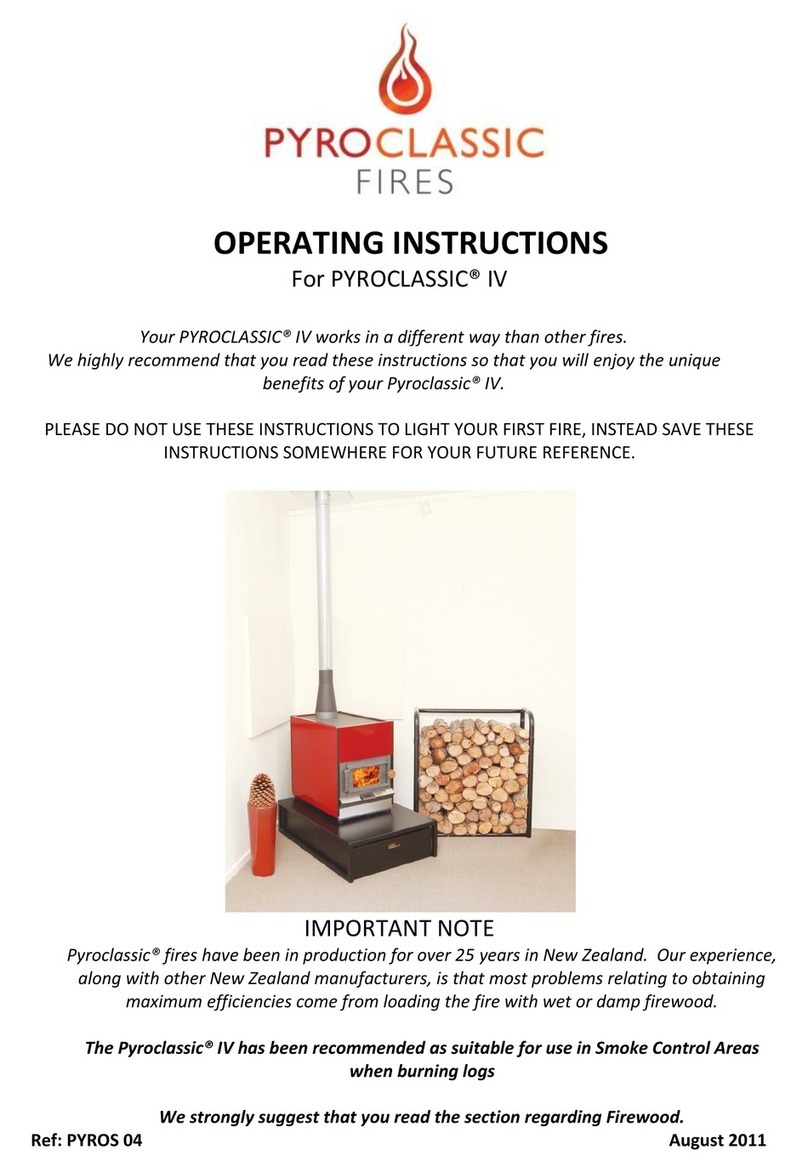
Pyroclassic Fires Operating Instructions | Updated July 2016 | V.2 | 8
OPERATING USE AND MAINTENANCE
REFUELLING ONTO A LOW FIREBED
The wood fuel inside a Pyroclassic® fire burns best on a thin bed of ash and hot coals. Refuelling must be carried out onto
a sufficient quantity of glowing embers so the new fuel will ignite. Add suitable kindling if necessary. If a new fuel load is
left without suitable ignition then a buildup of unburnt volatile gases can occur. This puts stress on the unit, which can
lead to an internal explosion when these gases do combust. Always ensure adequate ignition and combustion of fuel and
use the turboslide as instructed. If there is insufficient burning material in the firebed to light new fuel, excessive smoke
emission can occur.
THE PYROCLASSIC® IV IS SELF-REGULATING.
The vigorous fire towards the front of the chamber automatically slows down as the burning advances towards the back
of the fire chamber. Each cycle ends with ash and hot ember at the far end of the chamber. The Pyroclassic® IV is
designed to save on firewood and keep emission levels to a minimum by storing surplus heat in the cylinder, which
normally goes up the flue. This heat is released into the room even when the fire is low at the end of each burn cycle.
REFUELLING and using your PYROCLASSIC CURVED RAKE
Use the rake to evenly distribute the hot ember and ash along the base of the fire chamber, ensuring there is sufficient
hot ember at the front to provide adequate ignition to the fresh fuel load. Load the fuel so one end of each log is in
contact with the back wall of the firebox. If you keep your fire burning under the air tubes, this will ensure the maximum
amount of heat is captured within the ceramic cylinder.
Please Note: Only use Pyroclassic Fires tools as using others may cause damage to the cylinder. Always take care not to
heavily impact the ceramic surface.
DOOR/DOORKNOB
DO NOT run the fire with the door open. It will never reach the correct operating temperature and this can be very
dangerous.
The door seals with little pressure so it may be hard to open when the unit is very hot. The door knob is a great indicator
of what is going on inside your fire so if you find the door knob is too hot when you go to refuel, you are probably trying
prematurely. Do not overtighten the door knob as it can cause damage to the door gasket and fixing screws.
If your door knob is starting to show signs of charring, you are probably burning your fire too close to the door. Try closing
the turboslide sooner and letting the fire burn further back in the fire chamber.
Do not lean on the door or use it to help you stand when it is open as this can cause the door to move. If your door does
become misaligned, loosen the top bolt going horizontally through the hinge bar and lift the door back into the correct
position and retighten the bolt.
AIR INLETS
Do not block any fixed air inlets as this will affect the fire’s performance and may cause permanent damage.
BURNING WITH THE PYROCLASSIC® IV
Solid wood must change to gas and vapour before any burning can take place. This change occurs by heating wood to
high temperatures, making gas fuel. Low temperatures will make smoke and tars that are simply unburnt fuel. The
Pyroclassic® IV is a North/South burning fire, which means the fire is started in the front of the fire chamber and
continues along the length of the wood to the rear. To get the most out of your firewood, ensure logs are placed
lengthways into the fire chamber, not sideways. To achieve a high temperature in the fire chamber quickly, use the
turboslide and dry wood. You will never get the fire to burn correctly if you try starting fires with green or wet wood. The
only fuel authorised for use with this appliance within Urban Clean Air Sheds and Smoke Control Zones is well-seasoned
wood with a moisture content of 25% or less, 12-18% is ideal.





























